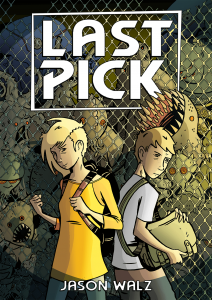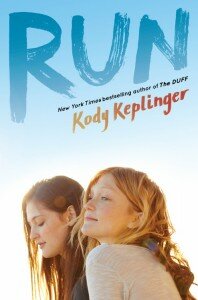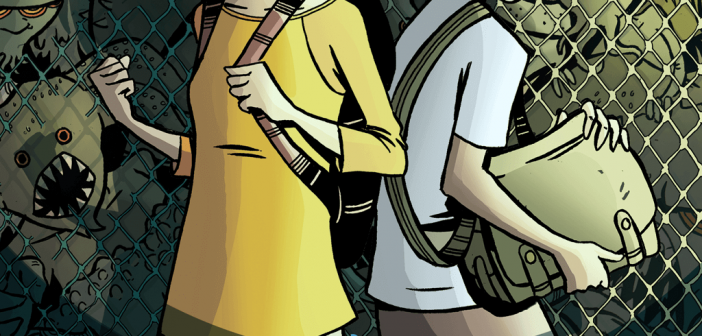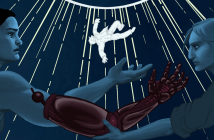 When writing guest blog posts, I often find it difficult to remember to mention my own book since I usually have something else that I’m interested in saying at that time. So here’s how I’m going to remedy that. In this post, I will mention my book exactly three times. It will come out of nowhere, and it will be an awkward “surprise” each time. All of a sudden you’ll just be reading along and then… BAM! And just like that, I will have shamelessly plugged my own book. Now that that’s out of the way, let’s dive in.
When writing guest blog posts, I often find it difficult to remember to mention my own book since I usually have something else that I’m interested in saying at that time. So here’s how I’m going to remedy that. In this post, I will mention my book exactly three times. It will come out of nowhere, and it will be an awkward “surprise” each time. All of a sudden you’ll just be reading along and then… BAM! And just like that, I will have shamelessly plugged my own book. Now that that’s out of the way, let’s dive in.
In many ways, YA continues to lead the pack when it comes to diverse representation in books!
But… we could still be doing so much more.
Civil liberties are being fought for everyday in this country. The disenfranchised continue to raise their voices in the streets, and we are able to see their faces on televisions and news sites constantly. The battle for equality and dignity rages on with these heroic people giving everything they’ve got to have their voices heard. Within all of this though, It’s often easy to forget that there are still many millions poorly represented in these fights for equality.
Some reports indicate that there are nearly 45 million people in the United States that have a disability severe enough to impact their daily living. 45 MILLION! That’s the largest minority group in the United States. Let me hammer this home for a second (I’m a former high school teacher that worked with students on the autism spectrum, so bare with me). Of that 45 million mentioned, only about half are employed, and within the homeless community, nearly half of them may have a disability. That means that unless we are often interacting with the homeless, or unless we are reaching out to those without jobs, we are missing the opportunity to really get to know some of these people. Many Americans are living lives isolated from an enormous percentage of our country.
My graphic novel, Last Pick, shines a spotlight on those with disabilities and let’s them be heroes in a world that has discounted them. BAM! See what I did there?
I often wonder if why it is taking so long for us to see those with disabilities better represented in books, television, and film is because our government does a “decent” job enacting laws that help protect their rights. It’s easy to believe that we’re doing everything we can for them and that they are being offered the same opportunities as everyone else. In reality, our society still doesn’t really embrace much of that population. I think that most of us have the best of intentions, but become a bit embarrassed or uncomfortable once we’re near someone with an obvious disability. We might just look away when it’s convenient. Our society just doesn’t do a great job allowing these voices to be fully heard and appreciated.
So that’s where we come in, readers. If we truly want diversity within our YA books, then we need to demand it. Publishers are doing a good job adding those with disabilities into their conversations about representation, but unfortunately, we have a long way to go still. That doesn’t mean there aren’t quite a few recent books worth looking at. A few off the top of my head are The Rest of Us Just Live Here by Patrick Ness, Otherbound by Corinne Duyvis, and The Fire Sermon by Francesca Haig. These books represent a continuing shift toward fully realized characters in YA that are not defined only by their disability.
(Oh, and Last Pick by Jason Walz. BAM!)
 But more than just including characters with disabilities in writing, the #ownvoices narrative is a resounding call that demands getting more books on the shelves written by authors that carry a disability diagnosis themselves. Hannah Moskowitz’s Not Otherwise Specified, Cindy Rodriguez’s When Reason Breaks, and Kody Keplinger’s Run are some good examples. The #ownvoices narrative often does a good job sidestepping some of the more common struggles writers have when depicting people with disabilities since harmful narratives surrounding it still exist. Far too often, we see disability representation in fiction by having characters overly pure of heart, or nearly magical in some way or another.
But more than just including characters with disabilities in writing, the #ownvoices narrative is a resounding call that demands getting more books on the shelves written by authors that carry a disability diagnosis themselves. Hannah Moskowitz’s Not Otherwise Specified, Cindy Rodriguez’s When Reason Breaks, and Kody Keplinger’s Run are some good examples. The #ownvoices narrative often does a good job sidestepping some of the more common struggles writers have when depicting people with disabilities since harmful narratives surrounding it still exist. Far too often, we see disability representation in fiction by having characters overly pure of heart, or nearly magical in some way or another.
One of the most common mistakes is that characters in YA with disabilities are often cishet, white males and are often written by cishet, white male authors. Full disclosure: I am one of those authors. I’ve made mistake after mistake in creating these books, but I have an amazing editor that pushes me to be more conscientious each time. I still have SO much more to learn about appropriate representation, and I’m quite certain I always will. I will stumble, and I will screw up.
And maybe that’s where we should all continue with this. Maybe, like everything else in life, we only grow by accepting how little we really understand and by trying to do better. The world of YA is currently at the forefront of diversity representation in many ways, but there is always room to do better. Let’s push the publishing doors wide open so that the rest of the world can get a better sense of the lives of those with disabilities. It’s much more difficult to ignore others once we begin seeing them as fully formed characters within the books we love so much. Books help create empathy and understanding by showing different lives lived and different perspectives on life itself. Demand that books continue to offer EVERYONE’S voices, and the publishing world will respond.


